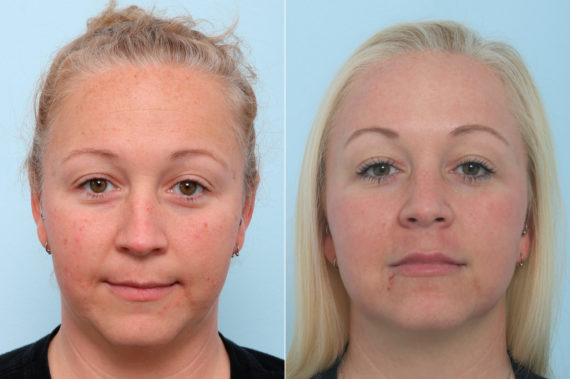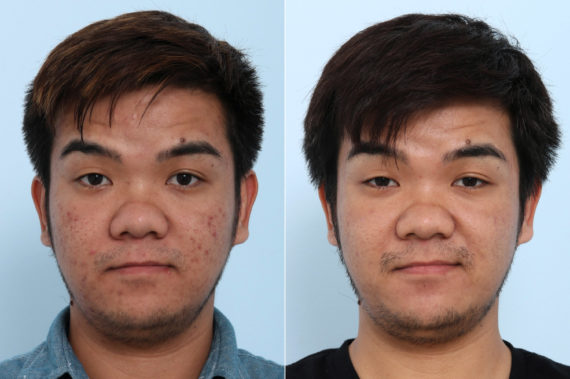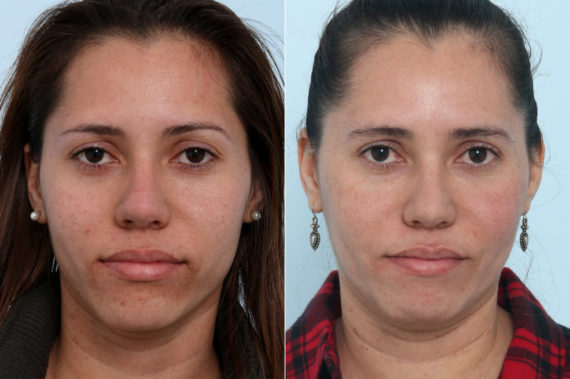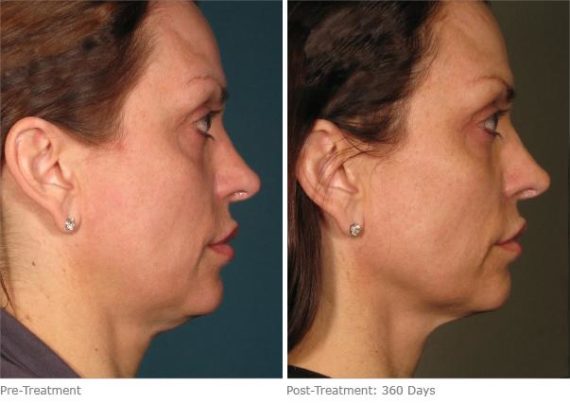
Ultherapy vs. Fraxel — which one is the right one for you? While Ultherapy and Fraxel have some similarities, they are also very different. Both are non-surgical options for minimizing the signs of aging on your face. Both have a relatively short recovery period.
But that’s where the similarities between Ultherapy vs. Fraxel seem to end. The treatments focus on different types of aging and work on different areas of the skin. Learn more about each so that you can make the best decision for yourself.
Ultrasound vs. Laser
The methods Ultherapy and Fraxel use to reduce the signs of aging on the face differ. Ultherapy, for example, uses ultrasound energy to restore a more youthful look. Fraxel uses lasers to reduce the signs aging.
Ultrasound energy works by targeting the dermal layer of skin, which is the layer just beneath the surface. The energy is sent from the Ultherapy device to the dermal layer where it stimulates the production of collagen to help smooth and firm the skin.
Fraxel laser, on the other hand, treats the outer layer of skin, the epidermis, as well as the dermal layer. The laser treatment is non-ablative, which means that it doesn’t cause damage to the outer layer of skin. Some lasers do damage the epidermis, which provides considerably more dramatic results but also extends the recovery period by many weeks.
During a Fraxel treatment, the laser sends bursts of energy to certain areas of the skin. The treatment actually gets its name from the type of laser beams it uses to treat skin conditions. The fractionated laser beams create small holes in the skin, leaving some areas untouched. The method of treatment allows it to work effectively without completely obliterating the top layer of your skin.
What They Do
Aside from how Ultherapy and Fraxel work, one of the major differences between the two treatments is what they actually treat. Ultherapy, for example, is the only non-surgical treatment that is FDA approved for skin tightening. If you have loose skin on your chin, neck or eyebrow area, Ultherapy can help to tone and tighten it. The treatment also works on the decolletage or chest area.
Since it focuses on the dermal layer, Ultherapy doesn’t do much to treat the texture or external appearance of the skin. It won’t reduce hyperpigmentation or spotting, for example, nor will it shrink pores or minimize scars.
Fraxel does help to improve the texture and external appearance of your skin. It can make pores look smaller, reduce the appearance of dark spots or hyperpigmentation, and minimize scars.
Both treatments can have a positive effect on wrinkles. Since Ultherapy helps to tighten loose or saggy skin, it can help make the skin look smoother. Fraxel also stimulates the production of collagen beneath the skin, which can help improve the appearance of wrinkles.
Recovery After Treatment
Although the recovery period after Fraxel isn’t as long as the recovery period after a traditional ablative laser treatment, many people do need to take some time off from work and their other daily activities. Often, initial recovery takes about one week.
Right after treatment, the skin will feel as if it has been slightly sunburned. It might be a bit swollen and reddish. Since the external layer of skin is slowly being sloughed off during the recovery period so that fresh, new skin can take its place, some people notice that their skin looks slightly more tanned or bronzed.
No official recovery or downtime is needed after Ultherapy. Some people do return to work right after their treatment, while others might take a day or two off to allow the swelling to decrease.
There might be some redness, swelling or even bruising after Ultherapy, but these signs typically fade relatively quickly. Along with being able to go back to work or other daily activities immediately after Ultherapy, you’ll also be able to resume exercise or other more strenuous activities right away.
How Long Results Last
You can expect your results to last for a similar length of time, whether you decide on Ultherapy or Fraxel. In the case of Ultherapy, many people see very long-lasting results but still decide to have a maintenance treatment every year or so.
Fraxel results also typically last for at least a year, as long as you take good care of your skin. That means wearing sunscreen with an SPF of at least 30 every day and minimizing sun exposure.
One big difference between the two treatments is how many sessions you need to get full results. Many people need several sessions of Fraxel, anywhere from three to six, before they get their final results. For the most part, people usually get full results after a single treatment of Ultherapy.
Cost of Ultherapy vs. Fraxel
The price point for Ultherapy is somewhat similar to the price point for Fraxel. What you’ll need to pay depends on the number of treatments you have and the size of the treated area. Usually, Fraxel ranges from $900 to $1,500 per treatment. Ultherapy ranges from $750 to $4,000. If you are concerned about the cost of either treatment, you can discuss financing options with your provider. Financing is usually available which allows you to divide the cost of treatment into smaller monthly payments.
Dr. Paul Vitenas offers both Ultherapy and Fraxel at Mirror Mirror Beauty Boutique in Houston. To learn more about either option, schedule a consultation today by calling 281-810-9083.





